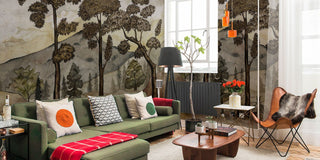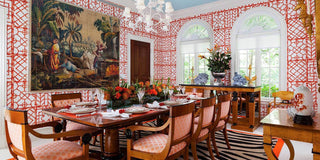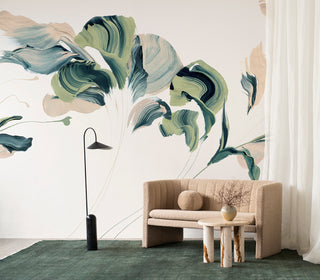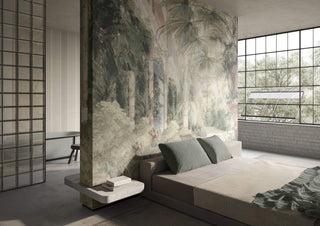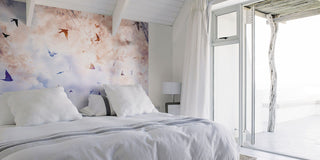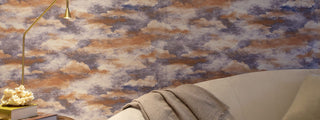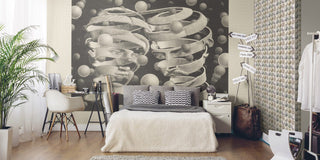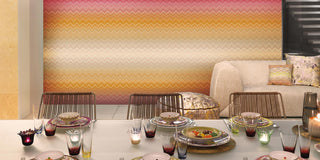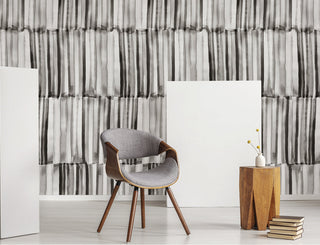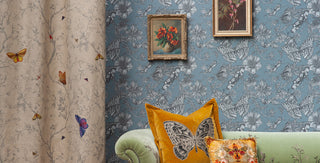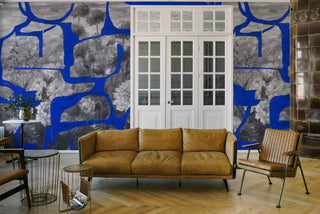
Mediterranean Motifs: 4 Lessons to Encapsulate European Interiors
Mediterranean design is synonymous with sun-soaked charm, easy elegance, and a sense of timeless ease. Whether it’s a Spanish villa, a Greek island home, or an Italian countryside escape, the hallmarks of European interiors, natural textures, imperfect finishes, and warm, welcoming palettes, are instantly recognisable and enduringly desirable.
Join us, as we explore four core lessons inspired by Mediterranean motifs, showing how you can capture the warm spirit of European interiors, using visual examples from Tres Tintas’ stunning Solera collection.
1. Work with the Warmth of Natural Light
Mediterranean interiors are known for their deep relationship with sunlight. The designs don’t fight the light, they enhance it. Whether you're working with large windows or a more modest glow, opt for wallcoverings that complement natural brightness.

Hand-drawn patterns like Clavelitos White reflect light beautifully, thanks to their breezy background tones and subtle sketchwork. This tile-inspired design mimics traditional Andalusian motifs with a simplified elegance, keeping things airy without losing character. Paired with light woods and natural fabrics like linen, it’s a simple way to unlock the sense of warmth Mediterranean spaces are known for.
2. Embrace Imperfection in Pattern
European interiors celebrate the artisanal over the mass-produced. Worn tiles, uneven plaster, and handmade ceramics are all embraced for their tactile beauty and irregular charm.
It’s about capturing spirit - and that often shines when things are unexpected. When styling your space, try to include features that emulate a feeling. Terraceo conjures the ritual of southern European street life, the pleasure of filling the squares with laughter as the sun goes down.

The loose, illustrative quality of the linework reflects that casual, lived-in feeling. Perfect for spaces that celebrate connection, like dining rooms, kitchens, or garden-facing lounges, invites a sense of place, spontaneity, and warmth.
3. Layer Pattern Thoughtfully
Mediterranean design is rarely minimal, but that doesn’t mean it’s chaotic. Layering patterns is key, and the secret lies in choosing motifs with a shared origin or influence.
Try combining complementary hand-drawn prints like those in the Vermut series, where geometric tile layouts are softened by sketched linework and moody colour palettes like cobalt and ochre. Pairing these with simpler soft furnishings in solid tones or lightly textured fabrics helps balance the space while keeping it lively.

This approach works especially well in bathrooms and kitchens, where you can play up the classic tile effect with a more modern, mural-style application.
4. Let Colour Tell a Story
European homes don’t shy away from bold, expressive colour - but it’s always grounded in nature. Think deep sea blues, sunbaked terracotta, olive green, and soft plaster pinks. These colours carry cultural and environmental references, giving the home a sense of place.
Tones like sun-washed neutrals, sage greens, and rich cobalt evoke everything from bustling markets to coastal cliffs. When selecting wallpaper, consider how these colours interact with the rest of your space - then use accessories like pottery, woven textiles, or rustic furniture to echo the story.
Let colour lead the way, and your space will naturally follow.
Whether you’re recreating a rustic Mediterranean escape or simply adding a hint of European elegance to your home, these four lessons from the Solera collection offer a timeless foundation. Explore hand-sketched motifs, thoughtful layering, and grounded colour palettes to bring a little Old World soul to modern interiors.









